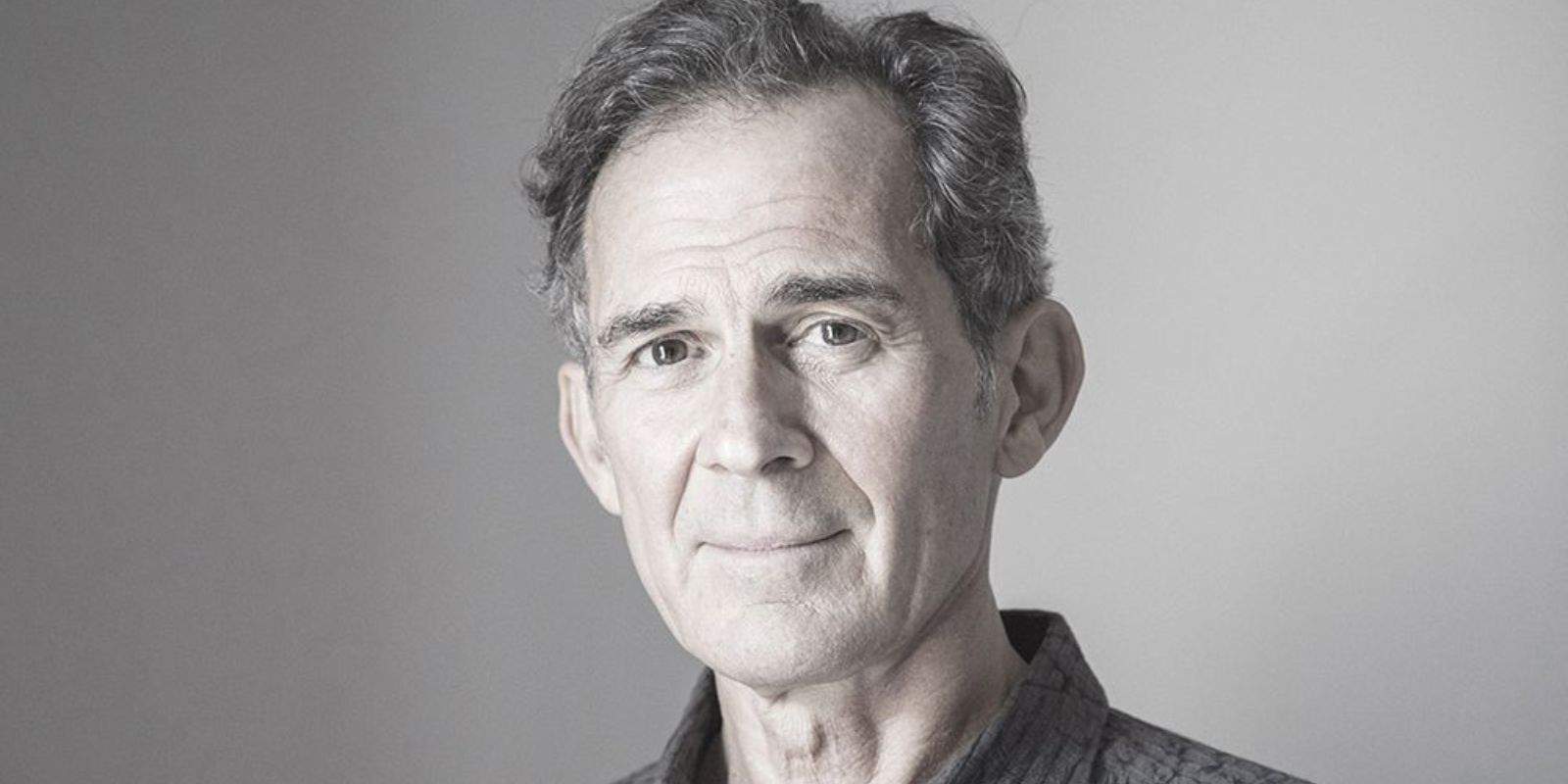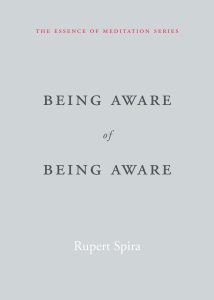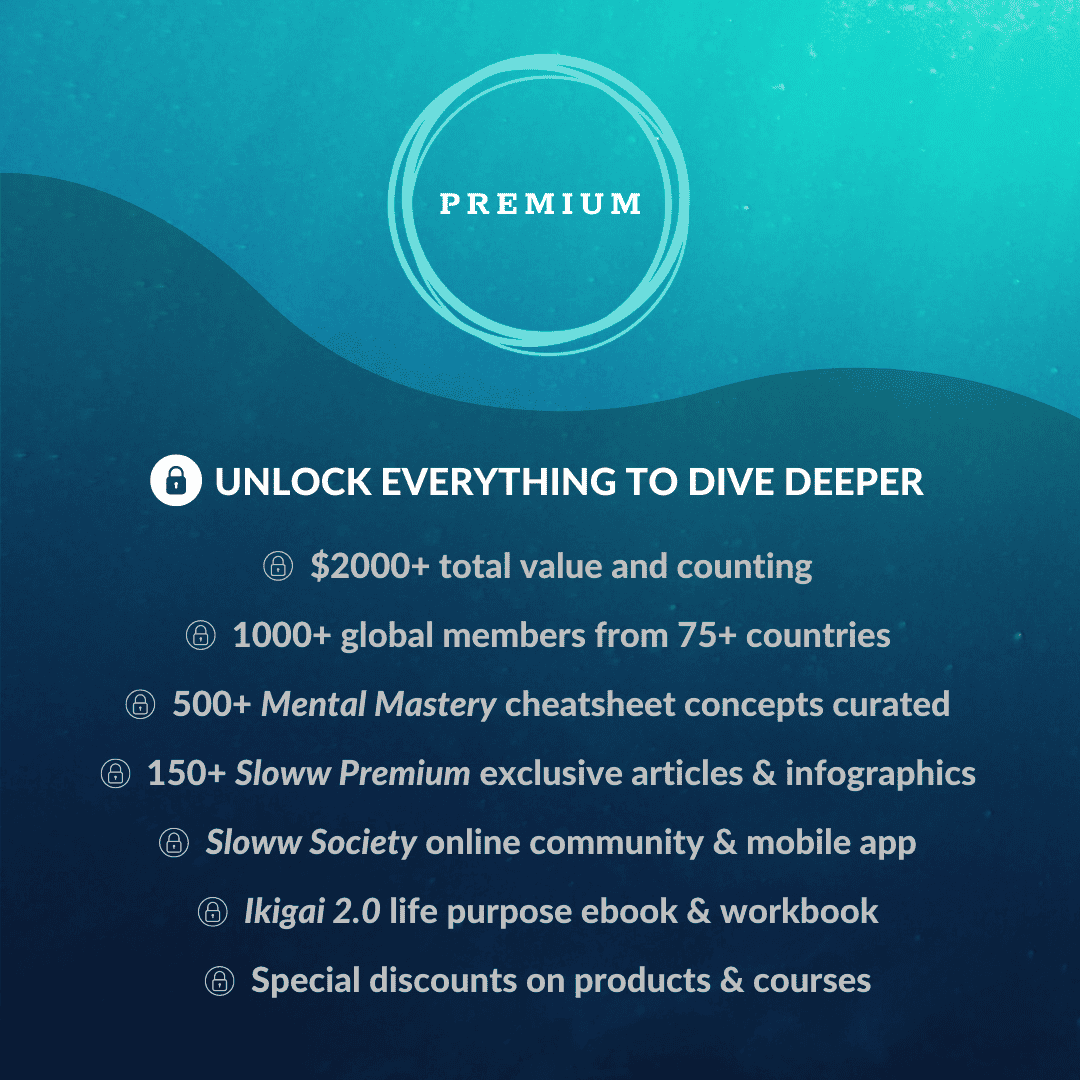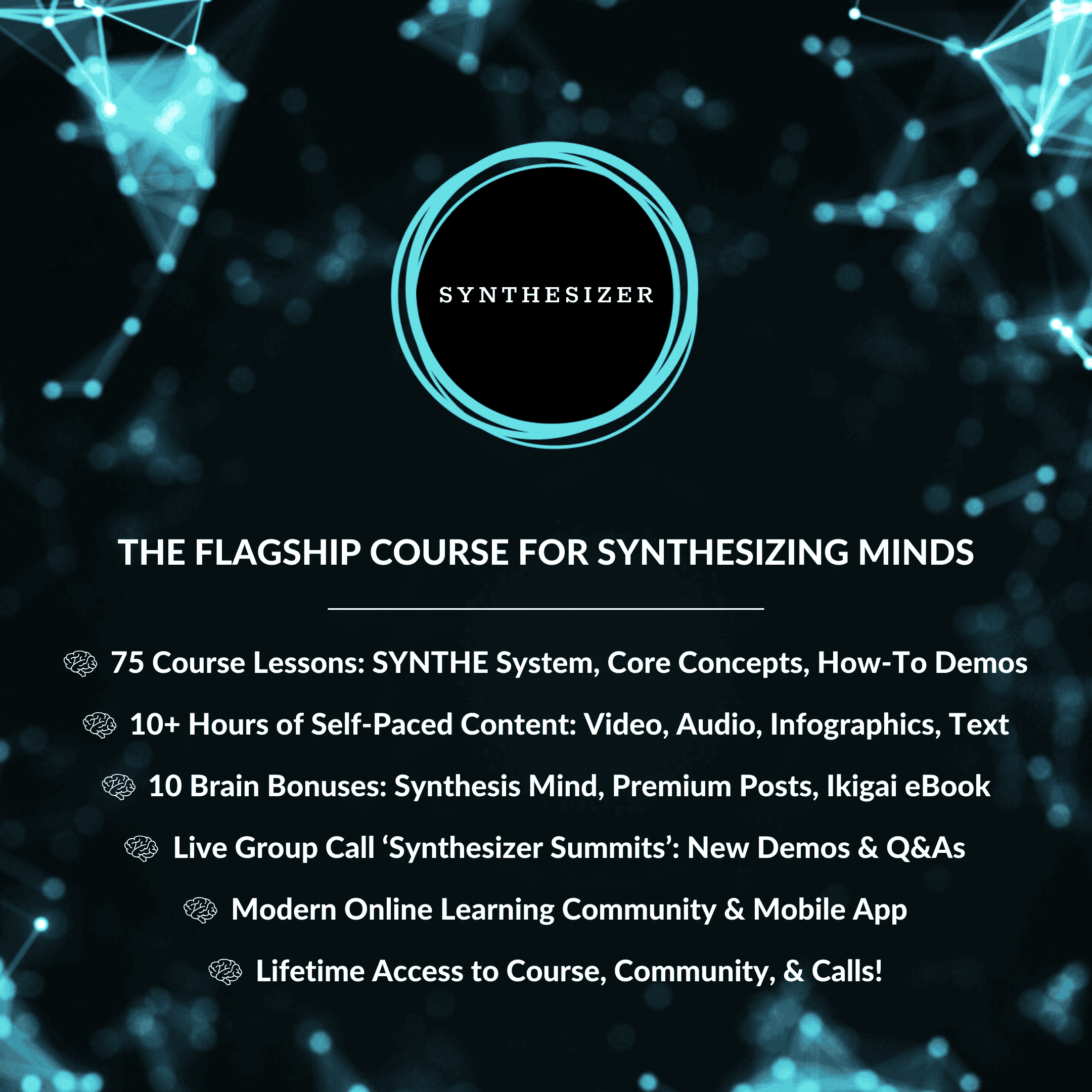This is a book summary of Being Aware of Being Aware (The Essence of Meditation Series) by Rupert Spira (Amazon).
🔒 Premium members also have access to these Rupert Spira companion posts:
· Rupert Spira Synthesis: Everything about Nonduality (+ Infographics)
· How to See with the Screen Analogy from Rupert Spira (+ Infographic)
Quick Housekeeping:
- All content in “quotation marks” is from the author (otherwise it’s paraphrased).
- All content is organized into my own themes (not the author’s chapters).
- Emphasis has been added in bold for readability/skimmability.
Book Summary Contents:
- About the Book
- Seeking & Ignorance
- Mind & Self
- Path & Practice
- Awareness & ‘I’
- Subject & Object
- Recognition & Revelation

The Essence of Meditation: Being Aware of Being Aware by Rupert Spira (Book Summary)
About the Book
“If you are reading this book it is most likely because objective experience has failed to provide peace and fulfilment sufficiently often that the impulse to invest your identity, security and happiness in it is beginning to wane. This understanding or intuition is one of the most profound and disturbing recognitions that one may have, and it initiates a crisis whose exploration and resolution are the subject matter of this book.”
- “When objective experience – including any conventional religious or spiritual practices that involve directing attention towards some more or less subtle object, such as an external god, a teacher, a mantra or the breath – has been exhausted as a possible means by which peace and happiness may be obtained, only one possibility remains: to turn the mind around upon itself and investigate its essential nature. The turning of the mind away from the objective content of experience towards the source or essence from which it has arisen is the essence of meditation or prayer. It is the ‘inward-facing path’ – sometimes referred to as self-remembering, self-enquiry, self-abidance or the way of surrender – of which the Direct Path that is explored in this book is the culmination.”
- “The inward-facing path explored in this book is only half the journey. Once the essential, irreducible nature of the mind has been recognised, and its inherent peace and unconditional joy accessed, it is necessary to face ‘outwards’ again towards objective experience, realigning the way we think and feel, and subsequently act, perceive and relate, with our new understanding.”
- “The approach suggested in this book is, to the best of my ability, the distilled essence of the Vedantic approach, divested of the cultural packaging of the Eastern traditions in which I and many others first encountered it.”
Definitions:
- “The word ‘knowing’ is used in this book synonymously with being aware, awareness, or consciousness. It does not imply conceptual knowledge but simply the experience of knowing itself, irrespective of whatever is known or experienced.”
- “‘Experience’ refers to both our internal experience of thoughts, images, memories, feelings and sensations and our perceptions of an apparently external world, that is, sights, sounds, tastes, textures and smells. These are referred to collectively as ‘objects’ or ‘objective experience’.”
Seeking & Ignorance
“The forgetting of our true nature is the source of all psychological suffering, and, conversely, the remembering of our self—its remembrance or recognition of itself—is the source of peace and happiness for which all people long.”
Seeking without questioning:
“It is only when we cease seeking happiness in objective experience, and allow the mind to sink deeper and deeper into the heart of awareness from which it has arisen, that we begin to taste the lasting peace and fulfilment for which we have longed all our life.”
Seeking & resistance:
- “In order to fulfil the desire for happiness, most people engage in a relentless search in the realm of objects, substances, activities, states of mind and relationships. This search also takes the form of resistance to whomever or whatever is perceived to jeopardize our happiness. Thus, seeking and resistance are the two main impulses that govern the thoughts and feelings, and the subsequent activities and relationships, of most people.”
- “If we are suffering it would be better to be honest with ourself and investigate the one who suffers. After all, if we are suffering we are, by definition, seeking. Doing nothing is not an option for one who considers himself to be a separate self. For such a one there are only two possibilities: to seek temporary relief in objects, substances, activities, states of mind and relationships, or to seek the source of suffering within himself through self-enquiry or self-investigation, which naturally leads to self-abidance or self-surrender.”
Little to no questioning:
- “Most of us never question the origin of our suffering, so busy are we escaping the discomfort of it through the acquisition of objects, substances, activities, states of mind and relationships. If we do question it, we usually attribute it to the absence of the object or experience that we seek or the presence of the situation we are attempting to avoid and, as a result, never fully trace it back to its original cause.”
- “Some people begin to question whether or not objective experience can ever really be the source of the lasting peace and happiness for which they long. Others reach a point of desperation or hopelessness before this intuition dawns.”
- “Indeed, most people go through their entire lives without ever questioning who or what it is that knows or is aware of their experience, or how experience comes to be at all.”
Ignored, overlooked, forgotten:
“We have forgotten who or what we essentially are and have mistaken ourself instead for a collection of thoughts, images, memories, feelings, sensations and perceptions.”
- “Most of us are so fascinated by the content of experience—thoughts, images, feelings, sensations and perceptions—that we overlook the knowing with which all knowledge and experience are known.”
- “Awareness of objects eclipses awareness of awareness.”
- “Like empty space, relatively speaking, being aware or awareness itself has no objective qualities or features. It is on account of its non-objectivity that the experience of being aware or awareness itself is usually ignored or overlooked.”
Veiling, ignorance, original sin:
- “This veiling, inadvertence or turning away from awareness is known as ‘original sin’ in the Christian tradition and as ‘ignorance’ in Vedanta. The Hebrew word most often translated in the Bible as ‘sin’ is chata’ah, meaning literally ‘to miss the mark’. Original sin is, in this context, the missing, overlooking or ignoring of the essential element of experience—awareness or consciousness itself, or God’s infinite being. Thus, in religious terminology to sin is to turn away from God. Likewise, in Sanskrit, the original language of Vedanta, the word avidya is usually translated as ‘ignorance’, ‘misunderstanding’, or ‘incorrect knowledge’. In this context ignorance does not imply stupidity, as in common parlance, but rather ignoring of awareness, that is, awareness’s apparent ignoring, overlooking or forgetting of itself.”
- “The Fall in the Christian tradition is simply the turning away of the mind from its essence. It is the turning away of the soul from God’s infinite being.”
Mind & Self
“The separate self or ego is an inevitable corollary to the forgetting, overlooking or ignoring of the true and only self of eternal, infinite awareness, or, in religious language, the forgetting of God’s infinite being.”
Finite mind:
“Infinite awareness and the finite mind are not two different entities. The finite mind is simply an imaginary limitation, self-assumed by infinite awareness for the sake of manifesting objective experience.”
- “Mind is the activity through which and as which awareness knows objective experience.”
- “There is nothing the mind can do to find or know awareness, for the mind is a limitation of the very awareness for which it is in search.”
- “The mind that seeks awareness is like a current in the ocean in search of water.”
- “The mind believes that awareness shares the limits and, therefore, the destiny of the body. This apparent mixture of awareness with the properties and limitations of the body results in the separate self or ego that most people believe and feel themselves to be.”
Separate self / ego:
“The separate self or ego exists as the very activity that ensues between awareness and its object.”
- “If someone were to ask us, relatively speaking, to stand up and take a step towards ourself, in which direction would we turn? We cannot take a step towards ourself, because we are already standing at ourself. Nor indeed can we take a step away from ourself, because we take ourself with us wherever we go.”
- “There is no pathway from our self to our self, from awareness to awareness.”
- “We do not have to eradicate a separate self in order to be knowingly eternal, infinite awareness or God’s infinite, self-aware being. There is no separate self to be eliminated. To attempt to dissolve or annihilate a separate self simply perpetuates its illusory existence.”
- “Seeing the reality of infinite awareness is the death or dissolution of the apparently separate self or ego … To refer to the death or dissolution of the separate self or ego is, at best, a concession to the mind’s belief in its own independent existence. More often it is a misunderstanding.”
- “In reality, the mind cannot be said to have disappeared or dissolved, for there was no real, independently existing entity or mind present to begin with.”
- “No self other than eternal, infinite awareness, or God’s infinite, self-aware being, has ever come into existence.”
- “Once the apparently separate self or ego has exhausted the possibilities for securing peace and happiness in objective experience, it may be open to the possibility of accessing them within itself. This intuition is the beginning of the separate self’s return to its inherently peaceful and unconditionally fulfilled essence of pure awareness, and is thus the resolution of its search.”
Direct Path & Practice
The Direct Path (or inward-facing path, path of discrimination) = the pathless path of meditation, prayer, self-enquiry, self-investigation, self-abidance, self-remembering, self-returning, self-resting, or self-surrender.
The Path:
“The journey that the mind takes from the objective content of its experience to its ever-present, innermost, irreducible essence is known in the Eastern traditions as meditation and in the West as prayer. It is sometimes referred to as the inward-facing path or the path of discrimination.”
- “In the Direct Path, awareness is simultaneously the origin, the path, and the goal. Being aware is simultaneously the subject that knows, the process of knowing, and the object that is known.”
- “In the Direct Path we start with the goal and we stay there. That is, awareness starts with itself and stays with itself. Thus, the highest meditation is simply to be.”
- “In Sanskrit it is referred to as atma vichara, which is often translated as ‘self-enquiry’ or ‘self-investigation’. However, this can be misleading because the words ‘enquiry’ and ‘investigation’ in Western culture suggest a process or activity of the mind. ‘Self-abidance’ or ‘self-resting’ would be a better translation.”
- “Meditation is not something we do; it is something we cease to do. Thus, it could be called ‘self-returning’ or ‘self-resting’.”
- “This returning of awareness to itself, its remembrance of itself—being aware of being aware—is the essence of meditation and prayer, and the direct path to lasting peace and happiness.”
- “Meditation is the remembering of our self: the pristine, luminous, inherently peaceful and unconditionally fulfilled experience of being aware that we always and already are, which runs ever-present throughout all experience, seemingly but never really obscured by thoughts, feelings, sensations and perceptions.”
- “Meditation is the disentangling of awareness from its own activity.”
- “In meditation the simple experience of being aware is extricated from everything that we are aware of.”
- “The inward-facing path, or Direct Path, in which the mind turns its attention away from objective experience towards its own essence or reality, is, in my experience, best elaborated in the Vedantic tradition, which details with great precision both the philosophy and the practice of this investigation. In this way the Vedantic tradition provides direct means for accessing the essential, irreducible nature of one’s mind and the source of lasting peace and happiness.”
The Practice:
“The Direct Path, by which the mind returns directly to its source through the recognition of its innate peace, clarity and luminosity, is the essence and culmination of all spiritual practice and can be found at the heart of all the great spiritual and religious traditions.”
Object-based meditation:
- “The word ‘attention’, from the Latin a-, meaning ‘to’ or ‘towards’, and tendere, meaning ‘to stretch’, implies a stretching or directing of awareness towards an object of knowledge or experience.”
- “Most forms of meditation involve directing the mind towards some kind of object, such as a mantra, a flame, a deity, a guru, the breathe or the pause between breaths. In the case of conventional prayer our love is directed away from ourself towards God, who is conceived to exist at an infinite distance from ourself.”
Direct path meditation:
- “As a compassionate concession to the belief in being a temporary, finite entity or self, the non-dual teaching will, in most cases, encourage the practice of meditation, in the form of self-enquiry or self-surrender.”
- “For most people, meditation, self-enquiry or contemplative prayer will seem, at least initially, to be an activity that they as a separate self practise, and only gradually, as their understanding matures and their practice is refined, will self-enquiry give way to self-abidance, self-resting or self-surrender. That is, only gradually, in most cases, will it become clear that meditation is what we are, not what we do, and that the separate self or finite mind is what we do, not what we are.”
- “In this giving up or turning around, we cease being obsessed with our suffering and become interested in the nature of the one who suffers. We turn away from the objects of experience and investigate the nature of the one who experiences. In this investigation, as the mind turns the light of its knowing away from the objects of experience towards its own essence, it is gradually, or occasionally suddenly, divested of its limitations and stands revealed as the very peace and happiness which it previously sought in objective experience. Peace and happiness are not, as such, objective experiences that the mind has from time to time; they are the very nature of the mind itself.”
- “Allow the experience of being aware to come into the foreground of experience, and let thoughts, images, feelings, sensations and perceptions recede into the background. Simply notice the experience of being aware.”
- “We cannot direct our mind towards the experience of being aware; we can only direct our mind away from it. Therefore, it would be more accurate to say that awareness must relax the focus of its attention, or disentangle itself from the objects of experience, thereby allowing its attention to return to or come to rest in itself. Thus, the highest form of meditation is not an activity that is undertaken by the mind. It is a relaxing, falling back or sinking of the mind into its source or essence of pure awareness, from which it has arisen.”
- “Awareness must see itself clearly, and to see itself clearly it must ‘look at’ itself.”
- “If we make a deep investigation of the nature of the mind, that is, if the mind investigates its own essential nature, travelling back through layers of thought, feeling, sensation and perception until it reaches its own essential, irreducible reality, it will always find peace and fulfilment there.”
- “When such a mind rises again from the heart of awareness and ventures out into the realm of objective experience, it does so, as Wordsworth said, ‘trailing clouds of glory’. That is, it rises from awareness still saturated with the imperturbable peace and causeless joy that are the essential qualities of awareness, and makes these qualities available to humanity.”
- “A mind that is accustomed to repeatedly dissolving in its source or essence becomes progressively saturated with its inherent peace. When such a mind rises again from the ocean of awareness, its activity makes that peace available to humanity. Such a mind may also be inspired by knowledge that is not simply a continuation of the past but comes directly from its unconditioned essence. This inspiration brings creativity and new possibilities into whatever sphere of knowledge or activity in which that mind operates.”
Awareness & ‘I’
“In many spiritual traditions the experience of knowing or being aware is referred to as consciousness or awareness. The suffix ‘-ness’ means ‘the state or presence of’, so the word ‘awareness’ means the state or presence of being aware.”
Awareness / knowing:
“Whatever we are thinking, feeling, perceiving or doing, we are aware.”
Awareness’s nature:
- “Awareness’s nature is to be aware of itself.”
- “Awareness knows itself simply by being itself.”
- “Only awareness is aware of awareness.”
- “Awareness’s nature is pure knowing. It is self-illuminating, self-knowing, self-aware.”
- “Awareness is inherently whole, complete and fulfilled in itself.”
- “Its nature is peace itself … This is not a fragile peace that depends on the relative calm of the mind, body or world, but an inherent peace that is always available in the background of experience, prior to and independent of the mind’s activity or inactivity. It is, as such, the peace that ‘passeth understanding’.”
- “Happiness is our very nature and lies at the source of the mind, or the heart of ourself, in all conditions and under all circumstances. It cannot be acquired; it can only be revealed. We cannot know happiness as an objective experience; we can only be it. We cannot be unhappy; we can only know unhappiness as an objective experience.”
Primary, essential, fundamental, irreducible:
- “Our essential, irreducible self, pure awareness.”
- “Awareness’s primary experience is to be aware of itself.”
- “Awareness is our primary experience; that is, being aware is awareness’s primary experience.”
- “Knowing or being aware is the essential, irreducible element of experience. it is fundamental to experience.”
- “It is the background on which all knowledge and experience take place.”
Non-objective & unconditioned:
- “Knowing, being aware or awareness itself is the essential, irreducible essence of the mind prior to its conditioning in the form of objective experience. It is, as such, unconditioned.”
- “A causeless joy that is prior to and independent of all states, circumstances and conditions.”
- “The experience of being aware is independent of whatever we are aware of.”
- “Before awareness knows objective experience, it knows itself.”
- “It cannot be known as an object and yet it is not unknown.”
- “It is empty of all apparent objects but full of itself alone.”
- “It is the most obvious element of experience and yet the most overlooked.”
- “In order to distinguish knowing or being aware from all objective knowledge and experience, it is referred to as the non-objective experience of knowing or being aware.”
- “The non-objective experience of being aware is the simplest and most intimate, obvious, self-evident fact of experience.”
- “We are aware that we are aware. Therefore, although knowing or being aware has no objective qualities, it is at the same time known.”
- “All objective experience is known. We are aware of our experience. It would not be possible to have an experience without knowing or being aware of it.”
- “We are aware of whatever is being known or experienced, irrespective of the contents of our knowledge or experience.”
All there is to objective experience:
- “It is that which makes experience possible and yet is not itself an experience.”
- “All there is to experience is knowing, and it is knowing that knows this knowing.”
- “It is the knowing element in all knowledge. It is the experiencing in all experience.”
- “All there is to a thought is thinking, and all there is to thinking is knowing.”
- “All there is to an emotion is feeling, and all there is to feeling is knowing.”
- “All there is to a sensation is sensing, and all there is to sensing is knowing.”
- “All there is to a perception is perceiving, and all there is to perceiving is knowing.”
Continuous & present:
- “Knowing or being aware is present in all experience.”
- “Being aware is not continuous in time; it is ever-present.”
- “Knowing or being aware is the continuous element in all changing knowledge and experience.”
- “No other element of experience is continuous.”
- “Our essential, self-aware being is prior to all becoming, and indeed remains present, albeit usually unnoticed, throughout all becoming.”
- “In order to know itself it doesn’t have to do anything or go anywhere.”
Changeless & ageless:
- “Awareness never experiences its own appearance or disappearance, its own beginning or ending, its own birth or death.”
- “Our essential nature of knowing, being aware or awareness itself has no age.”
- “Knowing or being aware intimately pervades all experience but is never changed by any particular experience.”
- “It stands neither to gain nor lose anything from any particular experience.”
- “The known always changes; knowing never changes.”
- “Nothing ever happens to awareness.”
- “It is the only stable element in experience.”
‘I’:
“The common name for the experience of being aware is ‘I’ … ‘I’ is the name we give to that which knows or is aware of all knowledge and experience.”
- “‘I’ is awareness itself.”
- “‘I’ is the knowing or aware element in all knowledge and experience.”
- “The ‘I’ that knows is the ‘I’ that is known.”
- “The ‘I’ that is known is the ‘I’ that knows. The sun that illuminates is the sun that is illuminated.”
- “It is ‘I, awareness’ that is aware of being aware. It is awareness that knows or is aware that there is awareness. Thus, being aware or awareness itself is self-aware. Just as the sun illuminates itself, so awareness knows itself.”
I am:
- “The knowledge ‘I am’ is awareness’s awareness of itself … or awareness’s knowledge of itself.”
- “The knowledge ‘I am’ is the experience in which the finite mind and infinite awareness intersect. It is a beacon that shines with the presence of awareness in the midst of experience. It is a portal through which the mind passes on its journey back to its source.”
- “Being aware of being aware—abiding in and as the self, resting in the ‘I am’, practising the presence of God—is the only form of meditation or prayer in which the ego, the apparently separate subject of experience, is not maintained. It is, as such, the highest form of meditation or prayer. It is the meditation or prayer for which all other meditations and prayers are preparations.”
I am aware:
- “In order to answer the question ‘Am I aware?’ we must ‘go to’ the experience of being aware. In other words, we must know the experience of being aware. We must be aware of being aware.”
- “The experience ‘I am aware’ is awareness’s knowledge of itself.”
- “The ‘I’ that is aware—to which we refer when we say ‘I am aware’—is the same ‘I’ that knows that I am aware.”
Subject & Object
“Awareness is too close to itself to know itself in subject-object relationship.”
Subject-Object relationship:
- “Subject and object are like two sides of the same coin. They cannot arise or exist independently of one another. In order for the mind, the separate subject of experience, to disappear or, more accurately, to lose its apparent limitations, the separate object of experience must also dissolve.”
- “In order for any knowledge or experience to be known, a knowing subject must stand apart from the known object, other or world. Attention is the distance between the subject and the object. As such, the subject-object relationship is the means by which all conventional knowledge and experience are known.”
- “All these forms of meditation or prayer require directing the mind towards more or less subtle objects and, as such, they all maintain the subject-object relationship. Whist these are entirely legitimate and, in many cases, necessary preludes to the ultimate meditation or prayer, they must at some point be abandoned.”
Relative & absolute knowledge:
- “Everything apart from awareness, that is, all objects of thought and perception, is known by something other than itself—a separate subject of experience—but awareness is known by itself alone. Therefore, awareness’s knowledge of itself is a unique kind of knowledge. It is the only form of knowledge that does not require the subject-object relationship. It is absolute knowledge. That is, it is the only knowledge or experience that is not relative to or dependent upon the finite mind, the apparently separate subject of experience.”
- “All relative knowledge and experience are derived from and are a refraction of this single, non-dual, absolute knowledge, just as the apparent multiplicity and diversity of the objects and people in a night dream are refractions of a single, indivisible mind.”
- “In religious terms this absolute knowledge is known as God. Thus, our knowledge of our self is God’s knowledge of Himself. It is for this reason that in the mystical Christian tradition, the resting of the mind in the heart of awareness is known as the practice of the presence of God or the surrender of the mind to God’s infinite being.”
Love & beauty:
- “This absence of duality, separation or otherness is the experience of love or beauty, in which any distinction between a self and an object, other or world has dissolved.”
- “In order for love to be experienced, both the lover and the beloved must vanish.”
- “In the familiar experience of love or beauty, awareness is tasting its own eternal, infinite reality.”
Recognition & Revelation
“The recognition or our essential, self-aware being—its knowing of itself—is the self-knowledge that shines after ignorance has been removed from it. The removal of ignorance and the consequent dawning of true knowledge is referred to in various spiritual traditions as awakening, enlightenment, self-realisation, salvation, illumination, liberation, satori, nirvana, moksha, bodhi or prajna.”
- “The word ‘revelation’ comes from the Latin revelare, from re-, meaning ‘back to the original’, ‘again’ or ‘anew’, and velare, meaning ‘to cover or veil’. Thus, a revelation is not a new experience but rather the laying bare or uncovering of an essential truth that was previously obscured or distorted. As such, meditation or prayer is the unveiling of the mind and the subsequent exposure of its essential, irreducible essence.”
- “Enlightenment or awakening is not a new or extraordinary kind of experience. It is the self-revelation of the very nature of experience itself.”
- “Enlightenment or awakening is not a particular experience or state of mind that may be achieved by practising hard enough or meditating long enough. It is the recognition of the very nature of the mind.”
- “Meditation is the subsidence of the activity of mind and the subsequent revelation of the very essence of the mind—pure knowing or awareness—to itself.”
- “Awareness cannot be discovered; it can only be recognised.”
- “The recognition of awareness—its recognition of itself—is not something new that is seen or known; it is a new way of seeing or knowing what is always and already present and in plain view.”
- “In this recognition, our essential, irreducible, self-aware being simply loses its apparent limitations and its reality stands revealed: open, transparent, luminous, indestructible, unborn and undying.”
- “Once this recognition has taken place it is never possible to invest our desire for lasting peace and happiness in objective experience with quite the same conviction again.”
- “The culmination of the inward-facing path is the recognition of the presence, the primacy and the nature of awareness – or, in religious language, spirit or God’s infinite being – which transcends all knowledge and experience. However, it is not yet the full experiential understanding in which awareness itself, or God’s infinite being, is known and felt to pervade and saturate all knowledge and experience, and indeed to be its sole substance and reality. It is to recognise the transcendent nature of awareness but not its immanence. If we do not reintegrate this understanding with our objective experience, then a fragile alliance will persist between our essential, irreducible nature of pure awareness and all objects and others. This often manifests as a denial or rejection of embodied life in the world and may readily become a refuge for any lingering sense of a separate self.”
You May Also Enjoy:
- See all book summaries





